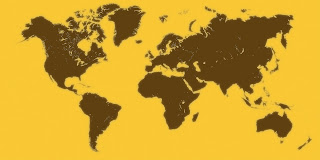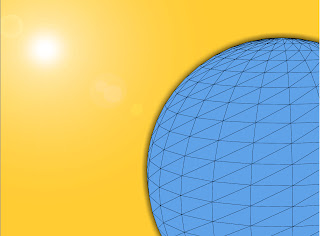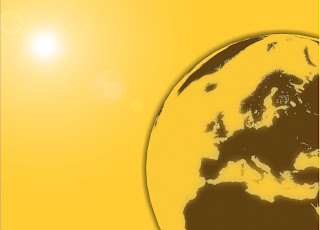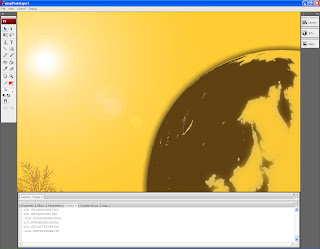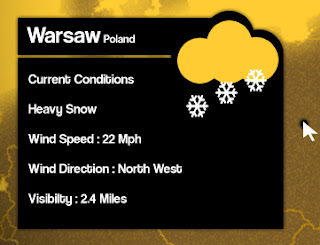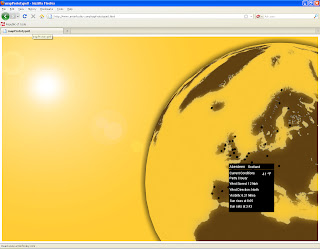Map Design and Map Development
Weekly Targets
- To finalise the Map design, including the location panels.
- To begin the first draft\ Mock up for the design of the user Garden
User Garden Design
Before beginning the initial design process of the user 3d garden i decided to look for inspiration on the Internet. I have already decided i want the user to design there gardens to one of either two styles. Inside a pre set area that basically looks like an empty garden, keeping it to true to life. Or depicting a garden as a planet and taking a slightly more abstract approach to it.
The first image that caught my attention was a garden made through knitting and stitching techniques using wool and cotton. As a pre set approach this looks exactly how i imagine the garden would look and even the angle at which this photo was taken is similar to the maximum angle i would want the user to be able to move the camera to.
The first image that caught my attention was a garden made through knitting and stitching techniques using wool and cotton. As a pre set approach this looks exactly how i imagine the garden would look and even the angle at which this photo was taken is similar to the maximum angle i would want the user to be able to move the camera to.
 |
| A 3d garden made entirely of wool and cotton using knitting and stitching |
I would also want the the user to be able to explore there garden by toggling through different camera angles. So the user would be able to position themselves inside there garden to see there creation in greater detail. Similar to the following images
 |
| Close up of one corner of the knitted garden |
 |
| Close up of another corner of the knitted garden |
The alternate approach would be to set up the users garden as a world or planet. And having a sort of god like creation feel to it were the user can simply rotate the world they've been given and simply add objects to it.
There is currently a British gas advertisement campaign running on British television depicting everyone owning a home on there own little planet. I like the idea of creating an environment that mimics this theme, of being able to create your garden on your own little planet.
 |
| British Gas advert with indivdual homes on indvidual planets |
Another example of this would be from a game developed mainly for the Nintendo Wii called Mario Galaxy which uses a similar sort of style to the British gas advert using small island sized worlds shaped and styled into miniature sized landscapes.
Two more screenshots taken from the same game showing Mario interacting with the miniature sized worlds that make up the content in Mario galaxy. These screenshots generally look like small planet sized gardens, with the multi coloured flowers and the rockery, which also form part of the content I'm offering the user in my own project.
 |
| A globe shaped object with multi coloured flowers applied to it from Mario Galaxy |
 |
| Another globe shaped planet from Mario Galaxy, with numerous amounts of multi coloured flowers applied to it |
These two images taken from the second installment of Mario Galaxy again show miniature sized islands but in this case shaped as both a torus and a cube. This has given me an idea of how i might further develop an aspect of the project perhaps offering the user the option to create different shaped gardens instead of just using the sphere shaped globe.
 |
| A cube shaped object used in Mario galaxy with hedge rows and grass applied to it |
In theory this would allow me to use far more polygons for the addable objects and higher detailed materials in general as only so many of them will be viewable.
 |
| Away3d stats showing the rElements (rendered elements) count of the scene. |
 |
| Away3d stats showing the rElements (rendered elements) count of the exact same scene. Notice the higher amount of memory usage and the the difference in the rElement count size |
Design Concept
So taking the idea further ive drawn free hand mock ups of four different states the user would encounter on a typical journey whilst creating there garden.
The first stage depicts a very inactive inanimate planet. There will be no pre set objects on the planet such as grass,trees or animals. At this point to help put the lifeless barren planet\garden point across to the user the colour scheme will include very dark colours only such blacks, dark greens and browns just enough to let the user know what is acually infront of them.
(Insert image)
The second stage the user will have imported in weather conditions from the map for example some heavy rain and at this point the weather will start have an effect on the planet\garden which will start to add some life to it.
(Insert image)
The third stage the user will have started to plant trees, flowers, plants and if the weather has been used correctly they would have started to develop into interactable objects. Also theyve perhaps changed the landscape slightly to create a pond or a lake and at this point the garden will have also attracted other life to it such as birds, animals or insects.
(Insert image)
The final stage is how i would expect the average garden\planet to look once the user had spent time developing it using the correct weather conditions over a long period of time. Hopefully portraying a massive difference to the first stage were the garden\planet looked barren.
Further Thinking
The actual colour scheme of the entire site will also change depending on what stage the user had developed there garden to. Starting from a dark lifeless colour scheme working towards a bright colourful colour scheme mimicing the users creation so to speak.
Also, now that i have a concept for design i think i need to redesign the map aspect of the project, the material will need redesigning and adapting to this idea and perhaps scaling down a great deal as its currently far to large. I also need to work the map into the context of the site, perhaps as an oribiting planet or something along those lines.
Also, now that i have a concept for design i think i need to redesign the map aspect of the project, the material will need redesigning and adapting to this idea and perhaps scaling down a great deal as its currently far to large. I also need to work the map into the context of the site, perhaps as an oribiting planet or something along those lines.


